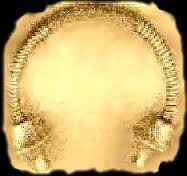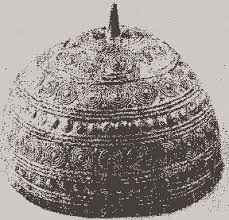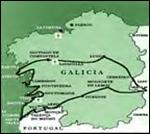|
Chapter Two De Riberas’ Ladies and Gentlemen
of the Bank Family Lines |
|||||||||||||||||||||||||||||||||||||||||||||||||||||||||||||||||||||||||||||||||||||||||||||||||||||||||||||||||||||||||||||||||||||||||||
 |
|||||||||||||||||||||||||||||||||||||||||||||||||||||||||||||||||||||||||||||||||||||||||||||||||||||||||||||||||||||||||||||||||||||||||||
|
Ceballos
de Ribera
Garcia
Romero
Martin
Robledo
Vigil
Montoya
Trujillo
Sosa
Silva
Jaramillo
Sandoval
Peralta
Medina
Graciosa Vallejo
Palomino
Otero
Noriega
Hurtado
Godinez
Sangil
Rendon
Rael
Tafoya
Lucero
Crespin
Fernandez
|
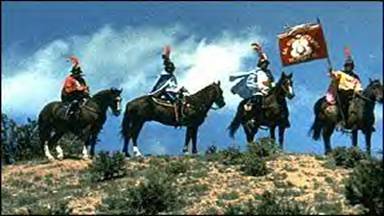 It
was never my intention to write this book. The project resulted in part from
the insistence by my sons, Justin David and Jonathan Glenn Dunaway-Perez, for
a Perez family Genealogy tree to present as an elementary school project. Over
the years, they had presented their mother's family tree, the Dunaway's, for
such projects. It
was never my intention to write this book. The project resulted in part from
the insistence by my sons, Justin David and Jonathan Glenn Dunaway-Perez, for
a Perez family Genealogy tree to present as an elementary school project. Over
the years, they had presented their mother's family tree, the Dunaway's, for
such projects.
A
few of the names listed below are not of my family lines, they do
however, represent some of New Mexico's other prominent Hispanic
families: ANAYA -
Francisco de Anaya Almazan was born in Mexico City, New Spain (Mexico)
but his father came from Salamanca, Spain. ARCHIBEQUE -
Jean L'Archeveque (one of my lines) was born in 1671 at Bayonne, France,
was killed by Indians. He
was also a member of the LaSalle Expedition. ARCHULETA -
Ascencio de Arechuleta came to New Mexico as a Conquistador with Oñate
in 1598. He was born in 1572
in Eibar, Guipuzcoa, Spain (one of my lines). BARELA - see
VARELA CHAVEZ - Don
Pedro Gomez Duran y Chavez came to New Mexico as a Conquistador with Oñate
in 1600. Born in 1562,
Valverde de Llerena, Spain (one of my lines). CRUZ - Juan
de la Cruz came to New Mexico as a Conquistador with Oñate in 1598. Born
in 1566, Barcelona, Catalua, Spain (one of my lines). GARCIA - The
most common Spanish name in the world. There
were several different Garcias that started families in New Mexico. Among
them was Juan Garcia de la Mora who was born around 1700, Villa de
Pozuelo de Amalgro, Spain (one of my lines). GONZALES -
Sebastian Gonzales was born in 1592 in Coimbra, Portugal. He
died in 1670 (one of my lines). Gurulé
(Jacques Grolet) was born in 1663 at La Rochelle, France (one of my
lines) and a member of the LaSalle Expedition.
JARAMILLO -
Jaramillos in New Mexico come from 2 different men: Alonso
Varela Jaramillo came to New Mexico as a Conquistador
with Oñate in 1598. Born in
1568, Santiago de Compostela, Spain.
Jose Jaramillo Negrete
came to New Mexico with Don Diego de Vargas in 1693. Born
in 1655 in Mexico City, New Spain (Mexico) one of my lines. LOPEZ -
There were several different Lopez men that started families in New
Mexico. Among them was Juan
Lopez (one of my lines). MARQUEZ -
Gerónimo Marquez was born in San Lucar de Barrameda, Spain. He
came to New Mexico as a Conquistador with Oñate in 1598. MIERA -
Bernardo Miery y Pacheco was born in 1713 at Valle de Carriedo, Spain. He
died in 1785. MONTOYA -
Bartolome Montoya came to New Mexico as a Conquistador with Oñate in
1600. Born in 1572,
Cantillana, Spain (one of my lines). OLGUIN -
Juan Lopez - Holguin came to New Mexico as a Conquistador with Oñate in
1600. He was born in 1560 at
Fuente Ovejuna, Spain. ROMERO -
Bartolome Romero was born in 1563 at Corral de Almaguer, Spain (one of
my lines). VALÈNCIA -
Blas de València was born in Sevilla, Spain in 1580. VARELA -
Varelas and Barelas come from 2 brothers: Alonso
Varela Jaramillo and Pedro
Varela de Losada. Alonso was born in 1568 and Pedro was
born in 1574. Both were born
in Santiago de Compostela, Spain. Both
men came to New Mexico as Conquistadors with Oñate in 1598. VIALPANDO -
Juan de Villa el Pando was born in Villa de Leon, Spain around 1670. VIGIL - Juan
Montes Vigil was born in Mexico City, New Spain (Mexico) but his father
came from Siero, Spain. Juan
died in Zacatecas, New Spain (Mexico) in 1682 (one of my lines). Each
family’s station in life is far more than a coat of arms. A
family is about who they were, what they contributed to the welfare of
their neighbors, and kindness and help they gave to those in need. Therefore,
the discussion of heraldry within this book is only for the purpose of
educating the reader about those who came from a lineage of knighthood. It
is not a value judgment. The
family’s New Mexico story began with Don Juan de Oñate's expedition
of 1598. Some of my family
lines include Godoy and Varela (Below). In 1595, the viceroy awarded the contract to Don Juan de Oñate, a
wealthy and distinguished man whose father had made a fortune from the
silver mines of Zacatecas and whose wife was the granddaughter of
Hernando Cortés
and the great-granddaughter of Montezuma. Oñate,
scion of a wealthy family and a seasoned soldier, hoped to discover new
wealth and to enjoy a brilliant future as its governor was officially
granted the right to colonize. After many delays in getting the expedition assembled, in January
1598, Oñate was finally able to get his caravan of eighty-four heavily
loaded wagons and carts to carry the baggage and provisions and a vast
herd of seven thousand head of livestock sheep, goats, cattle, horses
under way. Oñate lead the
way for one hundred and twenty-nine men. Many
came with their families and servants and a small group of ten
Franciscans who joined later. Among
the family names were Abendano, Archuleta, Baca, Barrios, Bernal,
Bustillo, Caceres, Cadimo, Carvajal, Chaves, Cruz, Duran, Escarramad,
Garcia, Holgado, Godoy,
Gonzalez, Jaramillo, Lobon, Griego, Gutierrez, Hernandez, Herrera,
Hinojos, Holguin, Hurtado, Jimenez, Jorge, Holguin, Lopez, Luna, Mederos,
Ocanto, Losada, Lucero, Madrid, Marquez, Martin, Serrano, Monroy,
Montoya, Moran, Naranjo, Pedraza, Perez, Ramirez, del Rio, Robledo,
Rodriguez, Salazar, Romero, Ruiz, Tapia, Torres, Varela,
Vasquez. Many are my
progenitors. My Ceballos
(Ceballes) many of these lines intermarried with several of these
families and the Varelas were original settlers with this group. Blazing a new route scouted by his nephew, Vicente de Zaldivar,
Oñate’s expedition struggled northward from Santa Barbara along the
upper Río Conchos across the Chihuahuan desert. Unlike previous expeditions, this one did not follow the Conchos to
the Rio Grande, it headed straight across the sand dunes of the
Chihuahua desert. A
vanguard, after four days without water, reached the Rio Grande on April
20th. Six days
later the colony of four hundred soldiers and the others was reunited. In
celebration of its survival a great feast was held. At one point in time the expedition was suffering from great
thirst. Providentially they
saved by a miraculous downpour "so heavy that very large pools were
formed and more than seven thousand head of cattle and mares of all
kinds drank." The exhausted travelers finally reached the Rio Grande and ascended
the river a distance. On Ascending the river, the expedition crossed it to the east side on
May 4, at a site just west of present downtown El Paso. Oñate
called this operation "El Paso del Río del Norte," an early
use of the name El Paso. Near
the upper reaches of the river he established his headquarters, founded
a church, and formally founded the province of New Mexico. Passing through the narrows near San Felipe Pueblo, Governor Oñate
arrived at the Pueblo of Santo Domingo and, on July 7, held a council
with the Indians of the surrounding country. It
was assumed that the natives would be responsive to conversion in the
country to the far north. In
a ceremony, the native leaders swore allegiance to the Spanish Crown and
Church. Later expedition
member Gaspar de Villagra wrote an epic poem about the conquest. Don Juan de Oñate established the first capital of New Mexico at
San Gabriel in 1598. That
historic capital is one of the oldest in the United States. It
was then moved over thirty miles south to the foot of the Sangre de
Cristo Mountains to Santa Fe in 1610. This
is where my family lines settled. However, before arriving in New Mexico, they came from Spain.
I’d been in Spain as a young man and enjoyed it very much.
But I must say I remained ignorant about its history, culture,
and people. This made my job
more difficult. As I began
reading and researching Spain I was troubled by how negative the
comments were about its history and people.
When one reviews writings on any subject the descriptive language
gives away a great deal about the author’s underlying thoughts and
beliefs. What the writer
thinks is betrayed in his/her writing.
As I’m an English speaker, reader, and writer my research was
limited by those books and on-line information written in English.
Unfortunately, the writers conveyed a bias regarding Spanish
explorers. In short, they
were always cast as conquerors rather than explorers.
The Spaniards were colonists rather than settlers.
Spanish cruelty and exploitation was emphasized rather than their
perseverance, ingenuity, and internal strength which was demanded to
overcome the difficulties of being the first nation to explore vast
areas of ocean and land. In
fact, if credit in these areas is given it is presented as an aside. The second area of bias that I found was that of the writer’s
ethnic, racial, and geographic backgrounds.
Writers of Anglo-Saxon (British), Anglo-American, and Northern
European extraction tended to present their world view superimposed upon
the historical facts and issues regarding Spain’s expansion as a world
power. By this I mean to say
that these writers tend to emphasize the conquistadors lust for gold,
cruelty, and subjugation of the native populations rather than
explaining in detail why it was done.
The specter of the Black Legend and the concept of the “noble
savage” are ever present lurking behind the scenes, so to speak.
What frightened men do thousands of miles away from readily
available resources, without help and support, left to their own
devices, and forced to make what they consider to be life or death
decisions with little or no experience in the matter is left untouched
by the writers. Instead, the
writers chose to focus upon the outcomes.
To be sure as seen through 21st Century eyes one
cannot accept many of those outcomes.
But these Spaniards were not in the 21st Century,
with its technology, instant communications, and deliberative political
bodies familiar with ideology of the democratic nation-state with a
citizen’s obligation to the rule of law. There were few, if any, international bodies responsible for human
rights and nation-state’s rights.
What does this leave us with?
These non-Spanish writers feel duty bound to shout out the
excesses and failures of Spanish expansion in the Old and New Worlds.
But they also chose to downplay the incredible difficulties faced
by explorers forced to make split second decisions in relation to
empires steeped in the glorification of the warrior class and dedicated
to conquest of their neighbors, not to mention the practice of blood
sacrifice. As a result, I’ve chosen to include many references in historical
Old World and New World timelines in an effort to provide the reader
with some understanding of the complexity of Spain’s challenges given
the rapid expansion of its empire, the vast areas of ocean and land that
it attempted to govern, and the constant warfare it engaged in with its
competitive European neighbors. One
can hardly imagine managing an empire spanning the globe in a world
without jets, railroads, and super highways.
There were no cell phones available for use in the New World
Jungles and European battlefields with which to instantly challenge
decisions made by commanders. It
should be noted that communications of that day took months, if not
years. Here, let me state clearly that I do not condone the brutality,
murder, and destruction which took place.
None of these things do I find acceptable.
Neither do I find acceptable the tens of millions killed in WWI
and WWII of the 20th Century wars or the many millions of
Jews murdered by the Nazis and others.
I leave it to the reader to pass judgment upon the past and the
men and women involved. And now, on to the story of the de Riberas. My grandmother, Maria Anna Amalia Ceballes, most probably Ceballos, was originally of Celt origin. The Celts arrived in Spain during the eighth to sixth Century's BC. Coat of Arms: A red shield with a gold bend bearing the letter
"F", between five saltires. Origin: Spanish Coat of Arms Cantabria
Spelling variations of the name include Caballero, Caballeros,
Caballer, Caballé, Caballe and many more. The
name also found in Castile, held by leaders of the Christian Reconquest
of Spain against the Moorish Muslims. Earlier Ceballos History
Origin: These were Celtic and Proto-Celtic tribes living in the remote
Spanish northern mountain areas.
Today, the word Celtic usually denotes people who are descended
from one of seven Celtic "fringe" provinces in Western Europe.
These principal Celtic
countries and regions of today are: Ireland; Scotland; Wales; Corwall;
Isle of Man; Brittany, France; and Galicia, Spain. The Celtic peoples, whose oldest remnants of their culture can be
found close to eastern France, Southern Germany and Belgium, and
northern Switzerland and Austria once spread from Galatia, Turkey to
Celtiberia, Spain and Ireland in the first Century BC.
Fortunately, the Celtic culture was situated on the borders of
western civilization instead of in the center where major changes took place. As
a result, Celtic civilization offers a window into a world that existed before
many of the conventions were brought about in Western society. It
has been compared in this respect to the Hindu culture of India, the other
"fringe" culture of the Arian expansion in Europe. There
are many similarities in their culture and their beliefs that span back to the
formative years of Western civilization. Celt, also spelled KELT, Latin CELTA, plural Celtae, is a member of
an early Indo-European people. These
peoples spread over much of Europe from the 2nd millennium BC to the 1st
Century BC. Their tribes and
groups eventually ranged from the British Isles and northern Spain to as far
east as Transylvania, the Black Sea coasts, and Galatia in Anatolia (Turkey). In part, they were absorbed into the Roman Empire as Britons, Gauls,
Boii, Galatians, and Celtiberians. Linguistically they survive in the modern
Celtic speakers of Ireland, Highland Scotland, the Isle of Man, Wales, and
Brittany. Spanish Celtiberian History:
After the battle, some Cantabrians remained in Italy and became
part of the elite Roman fighting forces. When
they returned to Spain, they were named Kevelion. That
word became Ceballos as the Cantabrians adopted the Spanish language. A typically Aryan people, the Celts blended in with the native Iberians to produce the Celtiberians. With the merging of these two groups there arose a new race. These then, divided into several tribes Cantabrians, Asturians, and Lusitanians giving their names to their respective homelands. These Celtic and Proto-Celtic tribes live to this day in the remote northern mountain areas of Spain. Maria Anna Amalia Ceballes' mother was Marcelina Barela or Varela. These
lines descended from the Oñate expeditionary force of 1599. Coat of Arms: A shield with four vertical red stripes and a helmet at the top and other variants. 0rigin Spain Galicia Galicia flag
The Varelas are first found in the Cantabria Region near Altamira, Spain. Their ancestral origin appears in ancient medieval records there. From very early on, the Varela family held lands and estates in Spain and were actively allied with other influential Spanish families. They branched out into other territories and holdings before taking the long voyage to the New World. The New Mexico Varela family can be traced to between the 11th and 12th centuries in Spain. Also, Fray Chaves' “Origins of New Mexico Families” page110, states the name Varela came from Santiago de Compostella, Spain. My grandfather's wife was Nicolasa (Means Victorious People)
Quintana. She too sprang from a
noble family.
The surname dates from the 12th Century. There
are places named Quintana all over Spain and the surname itself is so widely
diffused that no common origin has ever been identified. The
province of Burgos, however, claims the name had its beginnings there, in any
one its many locales named Quintana. Don
Martín de Quintana lived in Burgos, had many villas and farms, and was a
Grand Master in the military order of Calatrava. There
are also very early and important Quintana families in Aragón, Cataluña, and
València. Antonio and Diego Quintana were in Los Angeles in 1846. Commander
Quintana, from New Mexico, led the New Mexican soldiers who fought in 1846 on
the side of Commander General Castro against local Spanish rebellions. In early California, Andrés Quintana was a Spanish friar who
served in Santa Clara from 1805 to 1812, when he was murdered by local
Indians. Francisco Estévan Quintana was a grantee of the La Vena ranch in
1842, near San Luis Obispo. He was still there in 1860. Gerónimo Quintana was a grantee of San Juan Capistrano del Camote
ranch, also near San Luis Obispo in 1846. In Tubac, Arizona, in 1831, Isabel Quintana was the wife of
Valentín Sotelo. As late as 1860,
there were no other Quintanas in the territory. The Quintanas of San Antonio, Texas, descend from Rafael, a native
of Minorca in the Balearic Islands. Rafael had eight children by his wife,
Dominga García. In the U.S. Census Bureau study, “639 Most Frequently Occurring
Heavily Hispanic Surnames,” dated March 1996, Quintana ranks 140th. Among those who served in the military in Latin America during the
colonial period, Antonio de Quintana, was Cabo de la Armadilla de Marina at
Cartagena de Indias in February 1657. Esteban
de la Quintana was Alférez Real at Buga, Quito, Ecuador, in June 1742, and
Joaquín de la Quintana was Alférez Real and Regidor of Potosi, Bolivia, in
August 1802. Andrés Mariano de Quintana was Chantre of the Cathedral of
Antequera del Valle de Oxaca, Mexico, in October 1779, and Arcediano of the
same cathedral in November 1784. Antonio
Nazario de la Quintana was Alcalde de la Santa Hermandad in Pisco, Peru, in
September, 1810. Don Antonio Quintana - Dueñas was appointed Marqués de la
Floresta de Trifontane in November 1619; Don Gaspar Quintana-Dueñas San
Vítores, Conde de Villaoquina in May 1705; and Don Felipe Quintana García,
Marqués de Robrero in October 1872. The Riberas and the Old and New World Salvador Matías de Ribera, of my mother’s clan, is the
progenitor of interest in this book. The de Ribera Coat of Arms is a yellow shield with three horizontal
green stripes adorning it and Silver helmet at the top.
Origin Spain
Ribera
First found in Castile
RIVERA
The
original Ribera Coat of Arms: In gold, three sinople fees The surname Rivera or Ribera is the
ninth most common Hispanic surname in the United States. It
has its highest concentration in New York City, and is most prevalent among
those of Puerto Rican ancestry. It
is ranked somewhere between 173 and 237 in Latin America and in Spain, spelled
Rivera; it is found, on average, once in every 1,000 to 1,500 people. Don Diego de Rivera y Cotes, Quiroga y
Crema de Sandoval, was named “Conde de Quintanilla” on June 11, 1709. Doña
María de los Angeles Rivera y Olavide, widow of General Arsenio Martínez de
Campos y Antón, acquired the title “Marquesa de Martínez de Campos” on
April 30, 1902. Some of the first
New World settlers of this name or of its variants were Hernando de Ribera,
who voyaged to Brazil and Argentina with Sebastian Cabot in the 1520s. Also
of note was Gabriel de Rivera, who accompanied López de Legazpi to the
Philippines in the 1570s. Municipalities
use the coat of arms. There were
other members of the family who were early emigrants to Spain's colonies in
the New World.
Riveras
can be found throughout the Americas, particularly in Uruguay, Argentina,
Chile, Peru, Venezuela and Mexico. They
are also in many countries of Europe and the Philippines. The
surname is widely dispersed in the United States. In
1636, a Francisco de Rivera was living in Santa Fe in what today is New
Mexico. Juan Felipe de Rivera from
Zacatecas, the son of Salvador Matías de Ribera, lived there in 1716 and
sired fifteen children. A few Rivera families were identified in Texas in the late 1700's. A
Galician sailor named Francisco de Rivera lived in Pensacola, Florida, with
his African wife, Luisa, and their son, Cayetano. María
Ignacio Rivera, wife of Mariano Cota, was born in Mexico around 1773 and died
in Santa Barbara, California. Province
of Galicia The
last name Ribera or Rivera is Galician, widespread throughout the Iberian
Peninsula. It also gives a Jewish
origin (Sephardic) Spanish which is very old. In
711, the Arabs invaded the Iberian Peninsula, overcoming the Visigoth kingdom.
Soon in 740, Galicia was
incorporated into the Christian kingdom of Asturias. During
the middle Ages, the kingdom of Galicia was ruled by its own kings, but most
of the time it was leagued to the Kingdom of Leon and later to that of
Castile, while maintaining its own legal and customary practices and
personality. These were the
beginnings of the modern day Spanish kingdoms. From
the 13th Century on, the kings of Castile, as kings of Galicia, appointed an
Adelantado Maior, whose attributions passed to the Governor and Captain
General of the Kingdom of Galiza from the last years of the 15th Century. The
Governor also presided over the Real Audiencia del Reino de Galicia, a Royal
tribunal and government body. From
the 16th Century the representation and voice of the kingdom was held by an
assembly of deputies and representatives of the cities of the kingdom, the
Cortes or Junta of the Kingdom of Galicia, an institution which was forcibly
discontinued in 1833. At that
time, the kingdom was divided into four administrative provinces with no legal
mutual links. During the 19th and 20th centuries grew the demand for
self-government and for the recognition of the personality of Galicia, a
demand which led to the frustrated Statute of Autonomy of 1936, and to the
Statute of Autonomy of 1981, currently in force. The
land also had an impact on the psyche of its people.
The interior of Galicia is characterized by its hilly landscape,
although mountain ranges rise to 2,000m (6,600 ft) in the east and south. The
coastal areas are mostly an alternate series of rías (submerged valleys where
the sea penetrates tens of kilometres inland) and cliffs. The
climate of Galicia is temperate and rainy, but it is also markedly drier in
the summer, being usually classified as Oceanic in the west and north, and
Mediterranean in the southeast. Its
topographic and climatic conditions have made animal husbandry and farming the
primary source of Galicia's wealth for most of its history. With
the exception of shipbuilding and food processing, Galicia was largely a
semi-subsistence farming and fishing economy and did not experience
significant industrialization until after the Mid-20th Century. The
population is largely concentrated in two coastal areas; from Ferrol to A
Coruña in the northwest and from Pontevedra to Vigo in the southwest. To
a lesser extent there are smaller populations around the interior cities of
Lugo, Ourense and Santiago de Compostela. The
political capital is Santiago de Compostela, in the province of A Coruña.
Vigo, in the province of Pontevedra, is the most populous municipality with
296,479 inhabitants and the second most populous city with 206,411
inhabitants; while A Coruña is the most populous city with 220,581
inhabitants and the second most populous municipality with 246,056 inhabitants
in its municipality. Both cities
are the cores of the two major metropolitan areas. Two
languages are official and widely used today in Galicia, the native Galician,
a Romance language closely related to Portuguese with which it shares the
common Galician-Portuguese medieval literature, and the Spanish language,
usually known locally as Castilian. 56.4%
of the Galician population always speaks in Galician or speaks more in
Galician than in Castilian, while 42.5% speaks always in Castilian or more in
Castilian than in Galician. The
coat of arms of primitive and pure lineage or those of the solar of Galicia: In
field of gold, three stripes of sinople. These
same brought the house of Seville, founded by Perafán of Rivera, first
Adelantado mayor of Andalusia, and most of its branches and lines, even those
of Catalonia, Mallorca and the Vizcaya. Between
the houses of the De Ribera the most illustrious and ancient is that of
Galicia, which began with the Roman Governor, Cayo Mario (Gaius Marius),
and is of the trunk recognized as beginning with King Don Ramiro III. The Bishop of Orense, D. Pedro Seguino, in the years 1150, added to
the writings of his predecessor Bishop D. Servando. According
to him, the Lord of the solar house of Rivera in Galicia, "Peerage",
proceeded from the family of the marine, a descendant of the Roman General
Cayo Mario (Gaius Marius), and later Governor of Galicia. Notes: Gaius Marius had spent an uneventful year as Praetor in Rome (as Urban Praetor,
Peregrine Praetor or President of the extortion court).
In 114
BC Marius' imperium was prorogued and he was sent to govern
Hispania Lusitania, an ancient Iberian Roman province including approximately
all of modern Portugal south of the Douro River and part of modern Spain (the
present autonomous community of Extremadura and a small part of the province
of Salamanca). It was named after the Lusitani
or Lusitanian people (an Indo-European people).
Its capital was Emerita Augusta (currently Mérida, Spain), and
it was initially part of the Roman Republic province of Hispania Ulterior,
before becoming a province of its own in the Roman Empire. Romans first came to the territory around the mid 2nd Century BC. The
Roman victory over Hannibal in the second of the Punic Wars
(218-201 B.C.) resulted in the expulsion of the Carthaginians. The
Romans conquered East and South Spain, but met strong resistance elsewhere,
notably in the north. The fall
(133 B.C.) of Numantia
marked the end of organized resistance, and by the 1st Century A.D. Roman
control was virtually complete. Except
for the Basques, the Iberian population became thoroughly romanized, perhaps
more so than any subject population. Roman
rule brought political unity, law, and economic prosperity. Christianity
was introduced early; St. Paul is supposed to have visited Spain, and St.
James the Greater is its apostolic patron. Natives
of Spain contributed increasingly to both pagan and Christian literature in
Latin. Among them were Seneca,
Martial, and Quintilian. A war with Lusitanian tribes followed, from 155 to 139 BC.
In 27 BC, the province was
created. There he engaged in
some sort of minor military operation. During
this period in Roman history governors seem regularly to have served two years
in Hispania, Hispania was the name given by the Romans to the whole
of the Iberian Peninsula (modern Portugal, Spain, Andorra and Gibraltar) and
to two provinces created there in the period of the Roman Republic: Hispania
Citerior and Hispania Ulterior. During
the Principate, Hispania Ulterior (South) was first divided into two other
provinces, Baetica and Lusitania, while Hispania Citerior (East) was renamed
to Tarraconensis. Next, the
western part of Tarraconensis was split off, first as Hispania Nova, later
renamed Callaecia (or Gallaecia, hence modern Galicia). He was probably replaced in 113
BC. Mauro D. de Castilla Ferrer, in his
history of St. James the Apostle, Patron of Spain, writes that he was founder
D. Rudisendo, Lord of the solar house of Rivera Galicia, "Peerage";
He states that the Riveras, descend through the straight male of the Count
Sancho Belloso, natural son of King of León D. Ramiro III and Lord of the
House of Cabrera and Rivera. Notes: Ramiro III (961-26 June 985), King of León (966-984), was the son
of Sancho the Fat and his successor at the age of only five.
The Ribera family
derived from the King Ramiro III of Leon in Navarra (Spain, 8th Century AD). During his
minority, the regency was in the hands of two nuns: his aunt Elvira Ramírez,
who took the title of queen during the minority, and then his mother Teresa
Ansúrez, who had been put in a convent on her husband's death. As
a consequence of this, his reign is known for its support of the clergy. Among
his acts as king during his minority, he ratified a peace treaty with Caliph
al-Hakam II and he confronted Vikings who had invaded Galicia. With
the conclusion of the peace treaty, the vizier Almanzor invaded his realm. Upon
reaching majority and after his wedding to Sancha (Died after 983), daughter
of Gómez Díaz, Count of Saldaña, Ramiro tried to institute an absolutist
monarchy which resulted in the alienation of the already separatist Galicia
and Castile. This, together with
the constant routs experienced at the hands of the Muslims, such as the Battle
of Rueda, the Battle of Torrevicente and the worst of which took place at San
Esteban de Gormaz under the regency of his aunt in 975, led the Galician
nobility in 982 to proclaim Bermudo II, son of Ordoño III, king of Galicia. He
lost his throne to Bermudo two years later, in 984. He
had at least one child with his wife, Sancha Gómez, Ordoño Ramírez, who
married Cristina Bermúdez, daughter of his rival. Juan Bautista Labana, in his notes on
the Peerage of the Count Don Pedro, manifested that they were called Rivera,
as Lords of the Torre de Rivera in Galicia. This
tower, other authors say rising in the so-called "land of Rivera",
by strapping on the banks of the Limia River. Notes: The
Limia River (Lima in Portuguese) is in Galicia, Spain, and Portugal, with a
length of 108 kilometres (67 mi). The
source of the Limia is Talariño Mountain at 975 metres (3,199 ft) above sea
level, close to the Paradiña village in the Sarreaus municipality (Ourense,
Spain). It crosses the border into
Portugal close to the Lindoso village, and reaches the Atlantic near Viana do
Castelo. The Romans identified the
Limia with the mythical Lethe. Molina, in his "Antiquities of
Galicia", writes: "Here
the sailors took Riveras, whose solar in Galicia has been". It
says that D. Juan Tamayo in his martyrology (A
martyrology is a catalogue or
list of martyrs and other saints and beati arranged in the calendar order of
their anniversaries or feasts. Local
martyrologies record exclusively the custom of a particular Church. Local
lists were enriched by names borrowed from neighboring churches. Consolidation
occurred, by the combination of several local martyrologies, with or without
borrowings from literary sources.),
as the Bishop of Orense previously cited, supports the Roman origin of the
marine and shore, using inscriptions preserved in rocks. Notes: The
Romans used buildings or plots of land were reserved for construction of
military defensive positions. The
Latin word castra,
with its singular castrum, was used buildings or plots of land reserved for or
constructed for use as a military defensive position.
In classical Latin the word castra
means "great legionary encampment" and included
"marching", "temporary" and "fortified
permanent" ones, while the diminutive form castellum
was used for the smaller forts, which were usually, but not always, occupied
by the auxiliary units and used as logistic bases for the legions, as
explained by Vegetius. A generic
term is praesidium
("guard post or garrison"). The best known type of castra is the camp, a military town
designed to house and protect the soldiers and their equipment and supplies
when they were not fighting or marching. Regulations required a major unit in
the field to retire to a properly constructed camp every day. "...as soon
as they have marched into an enemy's land, they do not begin to fight till
they have walled their camp about; nor is the fence they raise rashly made, or
uneven; nor do they all abide ill it, nor do those that are in it take their
places at random; but if it happens that the ground is uneven, it is first
leveled: their camp is also
four-square by measure, and carpenters are ready, in great numbers, with their
tools, to erect their buildings for them."
To this end a marching column ported the equipment needed to build and
stock the camp in a baggage train of wagons and on the backs of the soldiers. Camps were the responsibility of engineering units to
which specialists of many types belonged, officered by architecti,
"chief engineers", who requisitioned manual labor from the soldiers
at large as required. They could
throw up a camp under enemy attack in as little as a few hours. Judging
from the names, they probably used a repertory of camp plans, selecting the
one appropriate to the length of time a legion would spend in it:
tertia castra, quarta castra, etc., "a camp of three
days", "four days", etc. More permanent camps were castra stativa,
"standing camps". The
least permanent of these were castra aestiva or aestivalia,
"summer camps", in which the soldiers were, housed sub pellibus
or sub tentoriis, "under tents".
Summer was the campaign season. For
the winter the soldiers retired to castra hiberna containing barracks
and other buildings of more solid materials, with timber construction
gradually being replaced by stone. It
is likely that the stones the Bishop of Orense previously cited to support the
Roman origin of the marine and shore, used inscriptions preserved in rocks
from a Roman castra hiberna. A legion-sized camp always placed towers at intervals along the wall with
positions between for the division artillery. This
probably accounts for Juan Bautista Labana’s notes on the Peerage of the
Count Don Pedro, in which he manifested that they were called Rivera, as Lords
of the Torre (Tower) de Rivera in Galicia. Notes: In order to understand
what was written one must understand Roman Spain.
Hispania, now Spain, was the name given by the Romans to the whole of
the Iberian Peninsula (modern Portugal, Spain, Andorra and Gibraltar) and to
two provinces created there in the period of the Roman Republic: Hispania
Citerior and Hispania Ulterior. During the Principate,
Hispania Ulterior was first divided into two other provinces, Baetica and
Lusitania, while Hispania Citerior was renamed to Tarraconensis. Next,
the western part of Tarraconensis was split off, first as Hispania Nova, later
renamed Callaecia (or Gallaecia, hence modern Galicia). Since
Diocletian's Tetrarchy (284 AD), the south of remaining Tarraconensis was
again split off as Carthaginiensis, and probably then took the Balearic
Islands, and all the resulting provinces formed one civil diocese under the
Vicarius for the Hispaniae ('Spains'; in the western prætorian prefecture of
the 'Gauls', that is, the Celtic provinces), who was also competent for
Mauretania Tingitana (around Tangiers), which hence was also officially
'Hispanic'. The area now called
Galicia was first inhabited by humans during the Middle Palaeolithic period.
It takes its name from the Gallaeci, the Celtic peoples living north of
the River Douro during the last millennium BC, in a region largely
coincidental with that of the Iron Age local Castro Culture. This
is to say that before the Romans the region had a strong Celtic culture and
ethos. Galicia was incorporated
into the Roman Empire at the end of the Cantabrian Wars in 19 BC, being turned
into a Roman province in the 3rd Century of our era. By
410, the Germanic Suebi established a kingdom with its capital in Braga
(Portugal) which was incorporated into that of the Visigoths in 585. In
short, a Celtic-Roman area was then to be melded with peoples of Germanic
origin. As stated by those who have written on
the subject, “These views have, however, very weak fundamentals, as they
only say that the primitive site of this lineage, settled in Galicia, is
positively certain and proven. Later
a branch created Manor House in Asturias, another went to Andalusia, founding
new solar in Seville.” Where
a name begins is of importance as it allows the reader to understand the
genesis of a family or groups of families using a particular surname.
Where that family and its name travels and settles provides an
opportunity to understand the historical and political context in which the
family found itself. A few key
dates and historical events are provided to illustrate how the Christian
Spanish families would have returned slowly from the northern Christian
kingdoms into the heart of the Iberian Peninsula after defeats of the Moors. First Umayyad foray over the Pyrenees into Visigothic Gaul
took place in 717 A.D. Gallia
Comata, or "long haired Gaul", encompassed the remainder of
present-day France, Belgium, and westernmost Germany, which the Romans gained
through the victory over the Celts in the Gallic Wars.
By 719, Islamic Umayyad rule in Iberia at its widest, covering almost
all of the Iberian Peninsula and across the Pyrenees in Narbonne. The Berber garrison was driven from Galicia in 739 A.D.
The de Riberas would have been one of the Christian warrior families
involved. By 742 A.D. the Berber garrisons gave up their positions
north of the Duero River to join the Berber rebellion. The
Douro crosses the great Castilian meseta and meanders through five
provinces of the autonomous community of Castile and León: Soria, Burgos,
Valladolid, Zamora, and Salamanca, passing through the towns of Soria,
Almazán, Aranda de Duero, Tordesillas, and Zamora.
This would have allowed for Christina expansion
south-centrally into Iberia. Pepin the Short conquered the last Muslim
strongholds in present-day France in 759 A.D.
This would have relieved the Spanish Christians of a two front war
scenario (Iberia proper and France to the north). By 801 A.D., the Carolingians led by Louis the Pious
conquer Barcelona, sack Lleida, and establish the Spanish March.
These actions allowed the French Christians to extend control by
establishing strongholds on the Balearic Sea side of Iberia. Unfortunately, the Carolingians failed to take and hold
Tarragona and Tortosa further south along the Balearic Sea side of Iberia.
This forced a retreat to their Ebro marches in 809 A.D.
The capture of Coimbra by the Asturians established the County of Coimbra in
868 A.D. The County of Coimbra was a political entity consisting of the lands of
Coimbra, Viseu, Lamengo and Santa Maria da Feira, in modern Portugal. It
arose within the Kingdom of Asturias following the reconquest of the region,
when the lands were granted to count Hermenegildo Gutiérrez, who over the
next four decades was largely responsible for the resettlement of the
depopulated province. In 1085 A.D., the landmark conquest of Toledo, below
Madrid and in the center of the peninsula, by Castilian forces occurred.
This constituted over half of Iberia being conquered by Christian-ruled
kingdoms.
—
“Who was it among you that gave me their horse?” —
“It was I, Sire” answered the knight Tellez. (The knight whose family
would thenceforth be called Jirón ... 1086) —
“Do you have proof?” —
“Yes, this piece of your mantle, which I cut with my sword.” What
reward can I offer?” —
“Nothing but the right to use the name Jirón [meaning “shred” or
“tatter”], which identifies this piece of cloth and will remind me of the
service it was my honor to render unto Your Majesty.” Thus
came into being one [Girón] of the 86 names of the Dukes of Osuna.
The knight whose family would thenceforth be called Jirón “Batalla
de Zalaca, 1086″ The first Crusade in 1097 A.D. ended with two-thirds of
the Iberian Peninsula being conquered by Christian-ruled kingdoms. The crusade continued when in 1118, Navarro-Aragonese
troops captured the Muslim strongholds of Tudela and Zaragoza in the
northeastern part of the peninsula. By 1147, the siege of Lisbon via the Second Crusade the
Kingdom of Portugal defeated the Almoravids. The Battle of Alarcos established Almohad authority in the
south of the Iberia. The
Battle on July 18, 1195, was between the Almohads led by Abu Yusuf
Ya'qub al-Mansur and King Alfonso VIII of Castile.
It resulted in the defeat of the Castilian forces and their subsequent
retreat to Toledo. However, the
Almohads reconquered Trujillo, Montánchez (The town of Montánchez in
Cáceres, Spain), and Talavera in the center of the Peninsula. By
the 1200s the Ribera surname can be traced back to Gonzalo López de Rivera,
Lord of the Castle of Rivera in Galicia. Source:
Instituto Genealógico e Histórico Latinoamericano The key battle Las of Navas de Tolosa in Jaén,
heralds the steady political decline of the Iberian Muslim kingdoms. The
Battle took place on July 16,
1212 and was an important turning point in the Reconquista and in the
medieval history of Spain. The
Christian forces of King Alfonso VIII of Castile were joined by the armies of
his rivals, Sancho VII of Navarre, Peter II of Aragon and Afonso II of
Portugal in battle against the Berber Almohad Muslim rulers of the southern
half of the Iberian Peninsula. The
Caliph al-Nasir led the Almohad army, made up of people from the whole Almohad
Empire. Most of the men in the
Almohad army came from the African side of the empire. In 1195, Alfonso VIII of Castile had been defeated by the
Almohads in the so-called Disaster of Alarcos. After this victory the Almohads
had taken important cities as Trujillo, Plasencia, Talavera, Cuenca and Uclés.
Then, in 1211, Muhammad al-Nasir had crossed the Strait of Gibraltar
with a powerful army, and invaded the Christian territory and captured the
stronghold of the Calatrava Knights in Salvatierra.
After this, the threat was so great for the Iberian Christian kingdoms
that Pope Innocent III called European knights to a crusade. Alfonso crossed the mountain range that defended the
Almohad camp, sneaking through the Despeñaperros Pass, being led by Martin
Alhaja, a local shepherd that knew the area. The
Christian coalition caught the Moorish army at camp by surprise, and Alhaja
was granted the hereditary title Cabeza de Vaca for his assistance to Alfonso
VIII. According to legend, the Caliph had his tent surrounded
with a bodyguard of slave-warriors who were chained together as a defense. The
Navarrese force led by their king Sancho VII broke through this bodyguard. The
Caliph escaped, but the Moors were routed, leaving some 100,000 casualties on
the battlefield. The victorious Christians seized
several prizes of war: the tapestry covering the entrance to Al Nasir's tent
was sent to the Abbey of Santa María la Real de Las Huelgas near Burgos where
it remains on display to date, and Miramamolín's tent and standard were
delivered to Pope Innocent III. Christian losses were far fewer, only about 2,000 men
(though not as few as legend had it). The losses were particularly heavy among the Orders. Those
killed included Pedro Gómez de Acevedo (bannerman of the Order of
Calatrava), Alfonso Fernández de Valladares (comendator of the Order
of Santiago), Pedro Arias (master of the Order of Santiago, died of
wounds on August
3rd) and Gomes Ramires (Portuguese master of the Knights Templar). Ruy
Díaz de Yanguas
(master of the Order of Calatrava) was so grievously wounded that he
had to resign his command. The Caliph Muhammad al-Nasir himself died in Marrakech
shortly after the battle, where he had fled after the defeat. Cádiz and the former capital of the caliphate Córdoba are conquered by Castilian
forces. On June 29, 1236,
after a siege of several months, Córdoba
was captured by King Ferdinand III of Castile.
Córdoba is a city in Andalusia, southern Spain, and the capital of the province of
Córdoba. The old town contains
numerous architectural reminders of when Corduba was the capital of
Hispania Ulterior during the Roman Republic and capital of Hispania Baetica
during the Roman Empire; and when Qurṭubah was the capital of the
Islamic Emirate and then Caliphate of Córdoba, including most of the Iberian
Peninsula. King Afonso III of Portugal took Faro (in the Algarve),
ending the Portuguese Reconquista in 1249. By 1249, the Emirate of Granada remained the only Muslim
state in Iberia. In
1292, the King of Castile granted the Field Marshal Payo de Ribera a vast area
of land next to the Montes de Toledo,
which since the conquest of Toledo had been a hunting ground for bears, deer
and boars for their kings, particularly Alfonso XI. In the 1300s and 1400s Marinid Muslims seize control of
some towns on the southern coast but were soon driven out, leaving only a few
isolated towns in the south of Granada still controlled by the Moors. In
1434, the Christian troops commanded by Diego Gómez de Ribera, the second
Great Adelantado of Andalusia, Álora fortress was besieged.
The position of Great Adelantado (aka Great Adelantado of the Border)
was created in 1396 by King Henry III to protect the border with the Kingdom
of Granada and granted to Per Afan de Ribera (1338-1421).
This hereditary position remained kept by the Ribera family, of
Galician origin and established in Seville in the 14th century, until
superseded by the title of Duke of Alcalá de los Gazules, granted by Philip
II in 1558. Diego Gómez de Ribera
succeeded his father in 1423 and was killed during the aforementioned siege of
Álora. This event is recalled by
the poem known as Álora la bien cercada (Álora the Well-besieged);
the poem is a typical border's romancero, orally transmitted from the 14th
century until compiled in several anthologies in the 19th-20th centuries.
Álora fortress was besieged 1484.
Independent from 1484 to 1487, Álora was subsequently incorporated to
the reconquered town of Málaga. In
1628, Álora eventually seceded from Málaga, "forever". In 1492, following the Treaty of Granada (November 25,
1491), the Moors surrender the city, completing the Reconquista. With
roots in the Middle Ages, Spanish surnames have been around since the 12th
Century. Hispanic surnames can be
especially important to genealogists because children are commonly given two
surnames, one from each parent. The
middle name (1st surname) traditionally comes from the father's name (apellido
paterno), and the last name (2nd surname) is the mother's maiden name (apellido
materno). Sometimes, these two
surnames may be found separated by y (meaning "and"),
although this is no longer as common as it once was. Geographical Surnames are
a common type of Hispanic last name. Spanish
geographical surnames are often derived from the location of the homestead
from which the first bearer and his family came from or resided in (River,
Bank, etc.) as was the case of the Riberas. Some
Spanish geographic surnames refer to landscape features. In Spain, the
nobiliary particle de is also used in two different styles. The
first is a "patronymic-de-toponymic" formula, as used by, the
de Ribera family. Examples of
nobility particle de without patronymic include the sixteenth-century
first Marquis of Santa Cruz, Álvaro de Bazán, the conquistador Hernando de
Soto, and the styling of the king of Spain as Juan Carlos de Borbón, a common
tradition in Spanish culture. Notes: Branch
of the family Bank in the Asturias The Ribera of the
Asturias: In gules field, a stone castle, on waves of azure and silver, in
which the head of a Moor floats;
going out of its homage, half brown lion, taking two silver flags, an on top,
with a cross, of azure and another fall, with a half moon also of azure. Asturias,
officially the Principality of
Asturias is an autonomous community in north-west Spain. It
is coextensive with the province of Asturias, and contains most of the
territory that was part of the Kingdom of Asturias in the middle Ages.
Divided into eight comarcas (counties), the autonomous community
of Asturias is bordered by Cantabria to the east, by Castile and León to the
south, by Galicia to the west, and by the Bay of Biscay to the north. The most important cities are the communal capital, Oviedo
(Uviéu or Uvieo), the seaport and largest city Gijón
(Xixón), and the industrial town of Avilés. Other
municipalities in Asturias include Cangas de Onís (Cangues d'Onís),
Cangas del Narcea, Gozón,
Grado (Grau or Grao), Langreo (Llangréu),Llanera,Laviana
(Llaviana), Lena (Ḷḷena),Llanes,Mieres, Siero,
Valdés, Vegadeo
(A Veiga) and Villaviciosa (see also List of municipalities and
comarcas in Asturias). With
the introduction of the Bronze Age, megaliths and tumuli were constructed. In
the Iron Age, the territory came under the cultural influence of the Celts;
the local Celtic peoples, known as the Astures, were composed of tribes such
as the Luggones, the Pesicos, and others, who populated the
entire area with castros (fortified hill-towns). Today the Astur Celtic influence persists in place names, such as those of
rivers and mountains. Santa
María del Naranco, ancient palace of Asturian Kings, 842 AD With
the conquest of Asturias by the Romans under Augustus (29-19 BC), the region
entered into the annals of history. After several centuries without foreign presence, the Suebi and Visigoths
occupied the land from the 6th Century AD to the beginning of the 8th Century, ending with the Moorish invasion of Spain.
However, as it had been for the
Romans and Visigoths, the Moors did not find mountainous territory easy to
conquer, and the lands along Spain's northern coast never fully became part of
Islamic Spain. Rather,
with the beginning of the Moorish conquest in the 8th Century, this region
became a refuge for Christian nobles, and in 722, a de facto
independent kingdom was established, the Regnum Asturorum, which was to
become the cradle of the incipient Reconquista (Reconquest). In
the 10th Century, the Kingdom of Asturias gave way to the Kingdom of León,
and during the middle Ages the geographic isolation of the territory made
historical references scarce. Through
the rebellion of Henry II of Castile in the 14th century, the Principality of
Asturias was established. The most
famous proponents of independence were Gonzalo Peláez and Queen Urraca, who,
while achieving significant victories were ultimately defeated by Castilian
troops. After its integration into
the Kingdom of Spain, Asturias provided the Spanish court with high-ranking
aristocrats and played an important role in the colonization of America.
Since 1388, the heir to the Castilian (later Spanish) throne has been
styled Prince of Asturias. In the
16th Century, the population reached 100,000 for the first time, and within
another century that number would double due to the arrival of American corn. During
the 18th Century, Asturias was one of the centers of the Spanish
Enlightenment. The renowned
Galician thinker Benito de Feijóo settled in the Benedictine Monastery
of San Vicente de Oviedo. The
Industrial Revolution came to Asturias after 1830 with the discovery and
systematic exploitation of coal mines and iron factories at the mining basins
of Nalón and Caudal,
which turned Asturias into an industrial region. At
the same time, there was significant migration to America (especially
Argentina, Uruguay, Puerto Rico, Cuba and Mexico); those who succeeded
overseas often returned to their native land much wealthier. These entrepreneurs were known collectively as 'Indianos', for having
visited and made their fortunes in the West Indies and beyond. Branch
of the family Bank in Seville This hereditary position
remained kept by the Ribera family, of Galician origin and established in
Seville in the 14th Century, until superseded by the title of Duke of Alcalá
de los Gazules, granted by Philip II in 1558 to Per Enríquez-Afán de Ribera
(1509-1571), aka Perafán de Ribera, second Marquis of Tarifa, fifth Count of
Los Molares, Viceroy of Catalonia and Naples. The illegitimate son of
Perafán de Ribera is known as St. Juan de Ribera (1532-1611, canonized in
1960 in spite of his role in the expelling of the Moriscos from València). Ribera
was appointed Archbishop and Viceroy of València and Patriarch of Antioch. The Ribera of the house
of Seville also used the solar shield of Galicia, although in some
descriptions are called bands, wrongly attributed to the three stripes of
sinople that contains; according to Betancourt and Nunez of the Death Penalty. It is said that the
first Jews arrived in Seville in the 6th Century BC, and were from David's
family. Branch
of the family Bank in Vizcaya Biscay (in Basque and officially Bizkaia and in Spanish Vizcaya) is a province of Spain
located just south of the Bay of Biscay. The
name also refers to a historical territory of the Basque Country, heir of the
ancient Lordship of Biscay. Its
capital city is Bilbao.
In 905, Leonese chronicles define for the first time the
Kingdom of Pamplona as including all the western Basque provinces as well as
the Rioja region. The territories
that would later constitute Biscay were included in that state. In the conflicts that the newly sovereign Kingdom of
Castile and Pamplona/Navarre had in the 11th and 12th centuries, the
Castilians were supported by many landowners from La Rioja, who sought to
consolidate their holdings under Castilian feudal law. These
pro-Castilian lords were led by the house of Haro, who were eventually granted
the rule of newly created Biscay. It
is unclear when this happened, but tradition says that Iñigo López was the
first Lord of Biscay in 1043. The region soon reverted to Navarre, remaining so until
the Castilian invasion of 1199-1200. The title to the lordship was inherited by Iñigo López's
descendants until, by inheritance, in 1370 it passed to John I of Castile. It
became one of the titles of the king of Castile. Since
then it remained connected to the crown, first to that of Castile and then,
from Carlos I, to that of Spain. It
was conditioned on the lord swearing to defend and maintain the fuero
(Biscayan laws, derived from Navarrese and Basque customary rights), which
affirmed that the possessors of the sovereignty of the lordship were the
Biscayans and that, at least in theory, they could refute the lord. The lords and later the kings came to swear the Statutes
to the oak of Gernika, where the assembly of the Lordship sits.
Branch
of the family Bank in Bornos (14th Century) "Adelantado
Mayor de la Frontera"). This
position was created in 1396 by King Henry III to protect the border with the
Kingdom of Granada and granted to Per Afan de Ribera (1338-1421). The municipality of
Bornos is located in the north of the Cádiz Province, 80 km north-east of
Cádiz. Borsno (a castle and a
domain) was purchased in 1398 by Per Afán de Ribera (1338-1421), first Great
Adelantado of Andalusia (Adelantado Mayor de Andalucía, aka Great Adelantado
of the Border, Adelantado Mayor de la Frontera).
This hereditary title, created in 1396 by King Henry III to protect the
border with the Kingdom of Granada, was kept by the Ribera family, of Galician
origin and established in Seville in the 14th century, until superseded by the
title of Duke of Alcalá de los Gazules, granted by Philip II in 1558 to Per
Enríquez-Afán de Ribera (1509-1571), aka Perafán de Ribera, 2nd Marquis of
Tarifa, 5th Count of Los Molares, Viceroy of Catalonia and Naples.
The illegitimate son of Perafán de Ribera is known as St. Juan de
Ribera (1532-1611, canonized in 1960 in spite of his role in the expelling of
the Moriscos from Valencia). Ribera
was appointed Archbishop and Viceroy of Valencia and Patriarch of Antioch. Bornos is, therefore,
the proud cradle of the Ribera family, whose members often stayed at Bornos
rather than somewhere else and built several monuments in the town.
The former Moorish castle was transformed in a palace of Plateresque
style (Spanish Renaissance) in the 16th century.
The palace's garden was designed on the model of Bramante's Belvedere
Garden in Vatican (1501) for Fadrique Enríquez de Ribera, who had travelled
to the Holy Land and Italy. The
Dame of the castle was said to bathe in the garden's basin to purify her body
after having purified her soul in the neighboring chapel.
Restored and transformed by Spanish and Italian artists in the
16th-17th centuries, the castle was purchased by the municipality from the
Ducal House of Medinaceli in 1953. The
logia was built as an open-air private museum by architect Benvenuto Tortello,
is unique in Andalusia. Francisco Enríquez de
Ribera founded in 1505 the Monastery of St. Mary of the Rosary, famous for its
cloister supported by 56 marble columns; a main religious center in the 18th
Century, the monastery declined and only a small tower and parts of its wall
are still visible. Fernando
Enríquez de Ribera founded in 1590 the St. Bernardino Convent, used as a
college by the Franciscan monks, and also nearly disappeared today. Perafán de Ribera, in
his testament, commissioned his son (St.) Juan to build the Colegio de la
Sangre (College of the Blood) to house the Duke's squires and other nobles of
low rank but good blood, which was achieved in 1597.
Perafán's second will was the building of the Corpus Christi Convent,
which was allowed by Pope Clement VII in 1593 and inaugurated in 1597 by
Cistercian nuns, subsequently succeeded by Franciscan Clarisses. Branch
of the family Bank in Cádiz The mother of Pedro
Afán de Ribera was born in Tarifa,
Cádiz, the son of Fernando
Enriquez, a member of the Enriquez family, which descended from royal bastards
living in the 14th Century. Was of
the family, the Afan de Ribera, located in Sevilla
and Cádiz and were involved in
the slave trade and the
settlement of the Canary Islands. Branch
of the family Bank in València Saint Juan de Ribera (1532–1611), Archbishop of València,
who was beatified in 1796 and canonized in 1960. A
Rivera family branch was founded in the city of València.
It
began with Melchor de Rivera, husband of Mrs. Maria
de Borja Llanzol Olivera, natural of València, parents of José Rivera y Borja,
native of València, Councilman Dean of this city and Baron of San Petrillo. He
married Mrs. Louise Escorcia merchant, born in Alicante. They
had Antonio de Rivera y Escorcia a native of València, Baron of San Petrillo,
field Sobrarbe and Arbajon, and Knight of the order of Montesa, which entered
January 7, 1758. This family Rivera
(Bank) based in València and
headed by Antonio Ribera y Escorcia, V Baron of San Petrillo’s title was
created by Felipe IV. Valencia or València is
the capital of the autonomous community of Valencia and the third largest city
in Spain after Madrid and Barcelona, with around 800,000 inhabitants in the
administrative centre. Its urban
area extends beyond the administrative city limits with a population of around
1.5 million people. Valencia is
Spain's third largest metropolitan area, with a population ranging from 1.7 to
2.5 million. Valencia was founded as
a Roman colony in 138 BC. The city
is situated on the banks of the Turia, on the east coast of the Iberian
Peninsula, fronting the Gulf of Valencia on the Mediterranean Sea.
Its historic centre is one of the largest in Spain, with approximately
169 hectares; this heritage of ancient monuments, views and cultural
attractions makes Valencia one of the country's most popular tourist
destinations. The original Latin name
of the city was Valentia, meaning "strength", or "valor",
the city being named according to the Roman practice of recognizing the valor
of former Roman soldiers after a war. The
Roman historian Livy explains that the founding of Valentia in the 2nd Century
BC was due to the settling of the Roman soldiers who fought against an Iberian
rebel, Viriato. During the rule of the
Muslim kingdoms in Spain, it had the nickname Medina bu-Tarab ('City of Joy')
according to a transliteration, or Medina at-Turab, 'City of Sands') according
to another, since it was located on the banks of the River Turia.
It is not clear if the term Balansiyya was reserved for the entire
Taifa of Valencia or also designated the city. Valencia stands on the
banks of the Turia or Túria River, located on the eastern coast of the
Iberian Peninsula and the western part of the Mediterranean Sea, fronting the
Gulf of Valencia. At its founding
by the Romans, it stood on a river island in the Turia, 6.4 km (4 mi) from the
sea. The Albufera, a freshwater
lagoon and estuary about 11 km (7 mi) south of the city, is one of the largest
lakes in Spain. Branch
of the family Bank in
Catalonia Montdanar In Catalonia they
settled in Montdanar. They became
viceroys of Cataluña in the North. 1554:
Afán de Ribera was the 2nd Marquis of Tarifa,
4th Count of Los Molares and Adelantado
of Andalucía. He served
as Viceroy of Catalonia from
1554 to 1558. The Riberas (Bank) of
Montdanar, in Catalonia, they bring: In silver field, three waved strips, of
gules. Catalonia is an autonomous
community of Spain, designated a "nationality" by its Statute of
Autonomy. Catalonia comprises four
provinces:
In the 10th
Century the eastern counties of the March of Gothia and the Marca Hispanica
became independent from the Frankish kingdom, uniting as vassals of Barcelona.
In 1137 Barcelona and Aragon
formed the Crown of Aragon, and Catalonia became a maritime power and the main
base for the Crown of Aragon's naval power and expansionism in the
Mediterranean. Medieval Catalan
literature flourished. Between
1469 and 1516, the King of Aragon and the Queen of Castille married and ruled
their kingdoms together, retaining all their distinct institutions, courts,
and the Constitution. During the
Reapers' War (1640-52), Catalonia rebelled against the presence of Castillian
army in its territory, becoming a republic under French protection. Under
the terms of the Treaty of the Pyrenees in 1659, which ended the wider
Franco-Spanish war, Castille agreed with France to cede it the northern parts
of Catalonia, mostly incorporated in the county of Roussillon. During
the War of the Spanish Succession (1701-14), the Crown of Aragon sided against
Philip V of Spain, whose subsequent victory led to the abolition of Catalan
institutions and the replacement of Latin or Catalan with the Spanish language
in legal documents. Branch
of the family Bank in town of Cadaqués, in the judicial district of Figueres,
in the province of Girona
Later, they
settled in the town of Cadaqués, in the judicial district of Figueres, in the
province of Girona. Cadaqués is a town in the
Alt Empordà comarca, in the province of Girona, Catalonia, Spain. It
is on a bay in the middle of the Cap de Creus Peninsula, near Cap de Creus
Cape, on the Costa Brava of the Mediterranean. It
is only a two-and-a-quarter hour drive from Barcelona, and thus it is very
accessible and not only attracts tourists but people who want a second home
for weekends and summers. In 2002,
Cadaqués had an official population of 2,612, but up to ten times as many
people can live in the town during the peak of the summer tourism season. They were admitted in
courts, and since the 15th Century, enjoyed the privilege of Knights. Juan
de Ribera was Inquisitor of Catalonia. Some
of its lines resided in Barcelona. Branch
of the family Bank in
Barcelona Some
of its lines resided in Barcelona. Barcelona
is the capital city of the autonomous community of Catalonia in Spain and the
country's 2nd largest city, with a population of 1.6 million within its
administrative limits. Its urban
area extends beyond the administrative city limits with a population of around
4.5 million people, being the sixth-most populous urban area in the European
Union after Paris, London, Madrid, the Ruhr area and Milan. About
five million people live in the Barcelona metropolitan area. It
is the largest metropolis on the Mediterranean Sea, located on the coast
between the mouths of the rivers Llobregat and Besòs, and bounded to the west by the Serra de Collserola
mountain range, the tallest peak of which is 512 metres (1,680 ft) high. Founded as a Roman city, in the Middle Ages Barcelona
became the capital of the County of Barcelona. After merging with the Kingdom
of Aragon, Barcelona continued to be an important city in the Crown of Aragon.
Besieged several times during its
history, Barcelona has a rich cultural heritage and is today an important
cultural centre and a major tourist destination. Branch
of the family Bank in Mallorca (17th Century) House of Ribera in
Mallorca had its beginning in the year 1678, in which Don Bernardo de Ribera y
Pascual. He was born in the
Catalan town of Cadaqués, and descendants of the Bank of Andalusia. He
married in the city of Majorca
with Doña Carlota (Coloma) Llaneres. The
line was with succession. Mr.
Bernardo Ribera and Marquis’, grandson of the expressed Bernando D., was
Captain of Sea and commanded the jabeque "Name of Jesus", which in
November 15, 1740 while in the channel of Oran, with only eighteen men, fought
heroically, and beat the crew of thirty-six boats and boats of the English
squad. Mr.
Gerónimo Ribera and Marquis, a member of the Mallorcan Royal Economic Society
of Friends of the Country; He served as an important person to King D. Carlos
III, as Armando Privateers against the enemy, already having played an honest
role with a proven record had been a committed supplier of all army cargo in
the conquest of Minorca, which took place in 1781. He
had already made a loan of more than thirty thousand pesos, to meet urgent
expenses of the Royal Navy. For
these and many other services S. M. awarded him by resolution of the Board of
the Chamber of March 26, 1787, with a perpetual privilege of nobility,
extended to all of his descendants, issued in Aranjuez to 24th of May of the
same year. Don
Juan Ribera y Noguera came to serve in the Royal Navy, embarking on the
expedition that went to the island of Santa Catalina in the Brazil: was later
found in the famous fighting. Majorca, or Mallorca
(Catalan: Mallorca) Mallorca is an island located in the Mediterranean Sea. It
is the largest island in the Balearic Islands archipelago, in Spain.
The capital of the island, Palma, is also the capital of the autonomous
community of the Balearic Islands. The
Cabrera Archipelago is administratively grouped with Majorca (in the
municipality of Palma). The anthem
of Majorca is La Balanguera. The name derives from
Latin insula maior, "larger island"; later Maiorica,
"the larger one" in comparison to Minorca, "the smaller
one". The
first to colonize the island were the Phoenicians, an ancient people of the
Middle East. They arrived around
the 8th Century BC and established numerous colonies there.
It was ultimately occupied by the Carthaginian Empire.
After the Second Punic War, Carthage lost all of its overseas
possessions and the Romans took over. The
island was occupied by the Romans in 123 BCE under Quintus Caecilius Metellus
Balearicus. It flourished under
Roman rule, during which time the towns of Pollentia (Alcúdia),
and Palmaria (Palma) were founded. In
addition, the northern town of Bocchoris, dating back to pre-Roman times, was
a federated city to Rome. The
local economy was largely driven by olive cultivation, viticulture, and salt
mining. Majorcan soldiers were
valued within the Roman legions for their skill with the sling. In
427, Gunderic and the Vandals captured the island. Roman rule was not restored
until 465. Geiseric, son of
Gunderic, governed Majorca, using it as his base to loot and plunder the
Mediterranean. In
534, Majorca was conquered by the Byzantine Empire, led by Apollinarius, and
administered as part of the province of Sardinia (see also Gymnesian Islands).
Under Byzantine rule, Christianity flourished and numerous churches
were built. From
707, the island was increasingly attacked by Muslim raiders from North Africa.
Recurrent invasions led the islanders to petition Charlemagne for help. In
902, Issam al-Hawlaní conquered the Balearic Islands, ushering in a new
period of prosperity under the Emirate of Córdoba. The
town of Palma was reshaped and expanded, and became known as Medina Mayurqa. Later
on, with the Caliphate of Córdoba at its height, the Moors improved
agriculture with irrigation and developed local industries. After
the Caliphate was dismembered in 1015, a new, more decadent era started. Majorca
came under rule by the Taifa of Dénia,
and from 1087 to 1114 was an independent Taifa.
During that period the island was visited by Ibn Hazm.
However, in 1114, an expedition of Pisans and Catalans, led by Ramon
Berenguer III, Count of Barcelona, overran the island, laying siege to Palma
for eight months.
After the city fell, the invaders
retreated due to problems in their own lands, and were replaced by the
Almoravides from North Africa, who ruled until 1176. The
Almoravides were replaced by the Almohad dynasty until 1229.
Abú Yahya
was the last Moorish leader of Majorca. In
the ensuing confusion and unrest, King James I of Aragon launched an invasion
which landed on Santa Ponça, Majorca, on September 8-9, 1229 with 15,000 men
and 1,500 horses, entering the city of Medina Mayurqa on December 31, 1229,
and annexing the island to his Crown of Aragon after a campaign which climaxed
on October 30, 1230. After
the death of James I in 1276, his kingdom was divided between his two sons. James
II became king of the new, and brief, Kingdom of Majorca.
In 1285, Alfonso III of Aragon, son of Peter III of Aragon, seized
power and his uncle James was forced to flee the island. The
successor of Alfonso III returned the power to James II. After
his death in 1311, he was succeeded by his son Sancho I of Majorca. James
III, nephew of Sancho, and only nine years old, became king in 1324. However,
in 1344, King Peter IV of Aragon invaded, and re-incorporated the island into
the Crown. James III was forced to
flee to Rosselló. Branch
of the family Bank in
Central America Honduras, Nicaragua,
Costa Rica, and Guatemala One of his descendants
branch in Central America Honduras, Nicaragua, Costa Rica and Guatemala during
the conquest of the region where he was governor of Costa Rica. Branch
of the family Bank in
Cordova (Suspected Jews 16th
Century) Returning again to the
Alcázars, Jerónima de León, another sister of the poet Baltasar del
Alcázar, also married into a suspect family. Her
husband Pedro de Ribera was the son of Licentiate Luis Sánchez de Ribera and
María de Palma, natives of Cordova. Pedro
appears in the Sevillian Protocols along with his brother Diego as an investor
in the trade with the Indies. In
1546 he leased the property of Almuedana from the Countess of Gelves, mother
of that same Count of Gelves who employed the poet Baltasar del Alcázar as
his financial administrator. Córdoba
is a city in Andalusia, southern Spain, and the capital of the province of
Córdoba. The old town contains
numerous architectural reminders of when Corduba was the capital of
Hispania Ulterior during the Roman Republic and capital of Hispania Baetica
during the Roman Empire; and when Qurṭubah was the capital of the
Islamic Emirate and then Caliphate of Córdoba, including most of the Iberian
Peninsula. It has been estimated that in the 10th century Córdoba
was the most populous city in the world, and under the rule of Caliph Al Hakam
II it had also become a centre for education under its Islamic rulers.
Al Hakam II opened many libraries on top of the many medical schools
and universities which existed at this time.
Such universities contributed towards developments in mathematics and
astronomy. During these centuries
Córdoba had become the intellectual centre of Europe and was also noted for
its predominantly Muslim society that was tolerant toward its minorities. The
first historical mention of a settlement dates, however, to the Carthaginian
expansion across the Guadalquivir, when the general Hamilcar Barca renamed it Kartuba,
from Kart-Juba, meaning "the City of Juba", the latter being
a Numidian commander who had died in a battle nearby. Córdoba
was conquered by the Romans in 206 B.O.T.
In 169 the Roman consul Marcus Claudius Marcellus founded a Latin
colony alongside the pre-existing Iberian settlement. Between
143 and 141 B.O.T. the town was besieged by Viriatus.
A Roman Forum is known to have existed in the city in 113 B.O.T.
The famous Cordoba Treasure, which mixes local and Roman artistic
traditions, was buried in the city at this time. It
can now be found in the collections of the British Museum. At
the time of Julius Caesar, Córdoba was the capital of the Roman province of Hispania
Ulterior Baetica. Great Roman
philosophers such as Lucius Annaeus Seneca the Younger, orators such as Seneca the
Elder and poets such as Lucan came from Roman Cordoba. Later,
it occupied an important place in the Provincia Hispaniae of the
Byzantine Empire (552-572) and under the Visigoths, who conquered it in the
late 6th Century. Córdoba
was captured in 711 by a Muslim army. Unlike other Iberian towns, no capitulation was signed and the position was
taken by storm. Córdoba was in turn governed by direct Muslim rule.
The new Muslim commanders established themselves within the city and in
716 it became a provincial capital, subordinate to the Caliphate of Damascus. Different
areas were allocated for the services in the Saint Vincent Church shared by
Christian and Muslims, until the former Mosque started to be erected on the
same spot under Abd-ar-Rahman I. In
May 766, it was chosen as the capital of the independent Muslim emirate of al-Andalus,
later a Caliphate itself. During
the caliphate apogee (1000 AD), Córdoba had a population of roughly 500,000
inhabitants, though estimates range between 350,000 and 1,000,000. In
the 10th and 11th centuries, Córdoba was one of the most advanced cities in
the world as well as a great cultural, political, financial and economic
centre. The Great Mosque of
Córdoba dates back to this time; under Caliph Al-Hakam II Córdoba had 3,000 mosques, splendid palaces
and 300 public baths, and received what was then the largest library in the
world, housing from 400,000 to 1,000,000 volumes.
Upon a change of rulers, though, the situation changed quickly.
"The vizier al-Mansur–the unofficial ruler of al-Andalus from
976 to 1002—burned most of the books on philosophy to please the Muslim
clergy; most of the others were sold off or perished in the civil strife not
long after. Branch
of the family Bank in
Navarre The Rivera of
Navarre also used the solar shield of Galicia, although in some descriptions
are called bands, wrongly attributed to the three stripes of sinople that
contains; according to Betancourt and Nunez of the Death Penalty. Navarre,
officially the Chartered Community of
Navarre, is an autonomous community in northern Spain, bordering the
Basque Country, La Rioja, and Aragon in Spain and Aquitaine in France.
The capital city is Pamplona. During the Roman Empire, the Vascones, a pre-Roman tribe
who populated the southern slopes of the Pyrenees, included the area which
would ultimately become Navarre. In
the mountainous north, the Vascones escaped large-scale Roman settlement,
except for coastal areas Oiasso today known as Gipuzkoa.
Not so the flatter areas to the south, which were amenable to
large-scale Roman farming—vineyards, olives, and wheat crops. Neither the Visigoths nor the Franks ever completely
subjugated the area. The Vascones
(to become the Basques) included neighboring tribes as of the 7th century.
In AD 778, the Basques defeated a Frankish army at the Battle of
Roncevaux Pass. Two generations
later, in 824, the Basque chieftain Iñigo Arista was elected King of Pamplona
supported by the Muwallad Banu Qasi of Tudela, so establishing a Basque
kingdom that developed and was later called Navarre.
That kingdom reached its zenith during the reign of Sancho III of
Navarre, comprising most of the Christian realms to the south of the Pyrenees,
and even a short overlordship of Gascony (Early-11th Century). When Sancho III died in 1035, the Kingdom of Navarre was
divided between his sons. It never fully recovered its political power, while
its commercial importance increased as traders and pilgrims (the Francs)
poured into the kingdom throughout the Way of Saint James.
In 1200 Navarre lost the key western Basque districts to Alphonse VIII
of Castile, leaving the kingdom landlocked.
Navarre then contributed with a small but symbolic force of 200 knights
to the decisive Battle of Las Navas de Tolosa in 1212 against the Almohads. The native line of kings came to an end in 1234, whose
descendants intermarried with French dynasties.
However, the Navarrese kept most of their strong laws and institutions.
The death of Queen Blanche I of Navarre (1441) inaugurated a civil war
period between the Beaumont and Agramont confederacies with the intervention
of the Castilian-Aragonese House of Trastámara in Navarre's internal affairs.
In 1512, Navarre was invaded by Ferdinand the Catholic's troops, with
the monarchs of Navarre Catherine and John III withdrawing to the north of the
Pyrenees, and establishing a Kingdom of Navarre-Bearn, led by Queen Jeanne
d'Albret as of 1555. To the south of the Pyrenees, Navarre was annexed to the
Crown of Castile (1515), but keeping a separate ambiguous status, and a shaky
balance up to 1610—King Henry ready to march over Spanish Navarre.
A Chartered Government was established (the Diputación), and
the kingdom managed to keep home rule. Tensions
with the Spanish Government came to a head as of 1794, when Spanish premier
Manuel Godoy attempted to suppress Navarrese and Basque self-government
altogether, with the end of the First Carlist War definitely bringing the
kingdom and its home rule (fueros) to an end (1839-1841). Branch
of the family Bank in
the Canary Islands The Rivera of the Canary
Islands bring the same weapons of the shield of Galicia, although in some
descriptions are called bands, wrongly attributed to the three stripes of
sinople that contains of Galicia also used the solar shield of Galicia
according to Betancourt and Nunez of the Death Penalty. As used by the Rivera of
Canary Islands, includes this Blazon; quarterly coat of arms: 1. and 4.,
azure, with a white Hound; 2., Sable, with a band of gold position in heads of
dragons of the same metal; and 3., sable, with a silver Castle. The Canary Islands
or Islas Canarias, also known as
the Canaries, are a Spanish archipelago located just off the southwest
coast of mainland Morocco, 100 kilometres (62 miles) west of the southern
border of Morocco. The Canaries
are one of Spain's 17 autonomous communities and are among the outermost
region of the European Union proper. The
islands include (from largest to smallest): Tenerife, Fuerteventura, Gran
Canaria, Lanzarote, La Palma, La Gomera, El Hierro, La Graciosa, Algranza,
Isla de Lobos, Montaña Clara and Roque del Oeste. The capital of the Autonomous Community is shared by the
cities of Santa Cruz de Tenerife and Las Palmas de Gran Canaria, which in turn
are the capitals of the provinces of Santa Cruz de Tenerife and Province of
Las Palmas. Las Palmas de Gran
Canaria has been the largest city in the Canaries since 1768, except for a
brief period in 1910. Between the
1833 territorial division of Spain and 1927 Santa Cruz de Tenerife was the
sole capital of the Canary Islands. In
1927 a decree ordered that the capital of the Canary Islands be shared, as it
remains at present. The third
largest city of the Canary Islands is La Laguna (a World Heritage Site) on
Tenerife. During the times of the Spanish Empire the Canaries were
the main stopover for Spanish galleons on their way to the Americas because of
the prevailing winds from the northeast. The name Islas Canarias is likely derived from the
Latin name Canariae Insulae, meaning "Island of the Dogs", a
name applied originally only to Gran Canaria.
According to the historian Pliny the Elder, the Mauretanian king Juba
II named the island Canaria because it contained "vast multitudes
of dogs of very large size". What
is certain is that the name of the islands does not derive from the canary
bird; rather, the birds are named after the islands. Branch
of the family Bank in
Aragonese towns since 1626 (17th
Century) The Ribera de Benabarre
(Huesca) is a town in the Aragonese county of Ribagorza, in the
province of Huesca, Spain. Traditionally,
Benabarre was the capital of the historic County of Ribagorza, which was more
expansive in territory than today, and included the comarca of Alta Ribagorça,
now in the province of Lleida, Catalonia.
The County of Ribagorza or Ribagorça
was originally the independent creation of a local Basque dynasty, later
absorbed into the Kingdom of Navarre, and then into the Crown of Aragon.
Historically it had a strong connection with the counties of Sobrarbe
and Pallars. Its territory was the
valleys of the rivers Ésera,
Isábena, and Noguera Ribagorzana. The
seat of its counts was at Benabarre. Other
notable towns include Benasque, Graus and Pont de Suert.
Today the western portion of the county roughly corresponds to the
Aragonese comarca of Ribagorza, with its administrative centre in
Grass; the eastern portion roughly corresponds to the Catalan comarca
of Alta Ribagorça. They bring: in field
gules, an armed wing of iron sword of silver, tip above and below it, one
intern lamb, of silver. Branches
are recorded in several Aragonese towns since 1626. Branch
of the family Bank in Cáceres The ancestor of the
Ribera's family in Cáceres was Alfón de Ribera, el Doncel, son of the
Adelantado of Andalusia, Don Perafrán de Ribera. In
time of Banderías (disputes between nobility factions in 15th Century) he was
governor of the castles of Azagala and Alburquerque, and he met death when he
left Seville in 1443, and a group of supporters of Infantes de Aragón killed
him. Branch
of the family Bank in Italy Coming from Galicia, the
Ribera linage started its enlargement in second half of the 14th Century.
They were representatives, as Adelantados Mayores de Andalucía, of the
royal authority, in a Seville divided by the rivalries of the local
aristocracy. At the end of the 15th
Century, after the union by marriage with the Enríquez linage, (from the
House of Trastámara), who reigned in Castile, Aragon, Navarre and Naples. They took the surname
Enríquez de Ribera and lived their golden century as the city of Seville
turned into the metropolis of the West Indies, being awarded with the titles
of Marquis of Tarifa (1514) and Duke of Alcalá de los Gazules (1558), two of
these members were appointed viceroys of Naples, a position highly coveted
amongst the aristocracy. In 1559, Afán de Ribera
was appointed Viceroy of Naples and held on to this position until his
death. The family broke into 5
branches, one of them moved to Naples (16th Century), and they became viceroys
of Naples, Sicily, and also of Venice. This
Italian Branch of the family also includes a saint, his name was Giovanni Afan
de Rivera, and though he lived in the 16th Century he was canonized by Pope
John XXIII in 1960. Pedro Afán de Ribera,
1st Duke of Alcalá de los Gazules, Virrey y Capitán General de Cataluña y
Nápoles (died 1571), also known as Pedro Enriquez Afan de Ribera or Per Afán
de Ribera y Portocarrero or Perafán de Ribera y Portocarrero, was a Spanish
nobleman most notable for his twelve-year-long service as Viceroy
of Naples, Viceroy of Cataluña
and 1st Duke of Alcalá de los Gazules. Pedro Afán de Ribera
was born in Tarifa, Cádiz, the son of Fernando Enriquez, a member of the Enriquez
family, which descended from royal bastards living in the 14th Century.
His mother's family, the Afan de Ribera, were located in Sevilla
and Cádiz and were involved in
the slave trade and the
settlement of the Canary Islands. Name:
Afan De Ribera, Pedro The Ribera, of Italy,
bring: The field of azur, and the head of sinople. Branch
of the family Bank in Andalusia In the province of Jaén,
Spain's autonomous community of Andalusia, Perafán (but eagerness) of the
Riverside family became "Adelantados" (governors) of Andalusia, in
the southern part of Spain during the "Reconquista" (the process of
conquering again from the Moors all the Iberian Peninsula). This House, also known
as the House of Alcalá de los Gazules, was created for the Ribera lineage of
Galician origin and became established in Seville at the beginning of the 14th
Century. The true founder of the
House and the promoter of the social ascent of the lineage was Per Afan de
Ribera "the older", as proclaimed by his great-great grandson, the
1st Marquis of Tarifa, on the stone of his tomb, which is one of those he
commissioned from the Aprile workshop in Genoa to honor his ancestors' memory. Per Afán de Ribera
"El
viejo" I Adelantado Mayor de Andalucía
Parents:
Ruy López de Ribera
[?-Algeciras,
1344]
Inés
de Sotomayor [?-?] Spouses
and children
Spouse
1.-María
Rodríguez Mariño [?-?] 1.
Ruy
(?-1407) o
Teresa de
Ayala (?-?) [with
issue] 2.
Gonzalo,
Señor de Huegar (?-?) o
María de
Sotomayor (?-1435) [with
issue] 3.
María
(?-?) o
[1404] Luis Méndez Portocarrero, Señor de Benacazón y Mocejón
(?-?) [with issue] Spouse
2.-c.
1395 Aldonza de Ayala y
Toledo Señora
de Malpica y Valdepusa [Toledo,
c. 1364-?] 1.
Diego,
II Adelantado Mayor de Andalucía (? - 1434) o
[a.
1419] Beatriz Portocarrero (?-1458) [with issue] 2.
Payo,
Señor de Malpica y Valdepusa (?-Died 1470) o
Marquesa
de Guzmán (?-?) [with
issue] Spouse
3.
[?-?] 1.
Inés
(?-?) 2.
María
(?-?) One of its most
enlightened descendants flourished at the beginning of the 15th Century, was
advanced to high station in Andalusia as Captain General of the frontier of
the Kingdom of León and Chief Justice of the city of Úbeda
is a town in the province of Jaén in Spain's autonomous community of
Andalusia. He lived to very old
age and was to have a stem which was an illustrious branch of the family Bank
in Andalusia, which was followed by: ·
The Dukes of Alcalá, ·
The Marquis of Malpica, ·
The Counts of the Molar and ·
Other houses of the most
qualified of Spain My progenitor of these de Riberas was Salvador Matías de Ribera, born in Puerto De Santa María, España, in the Andalusian area across the bay from Cádiz in 1675. Salvador Matías married Juana De Sosa Canela and had a child. He passed away on 1712 in Santa Fe, Nuevo Méjico (New Mexico).
Here are some basic facts about Spain's region of Andalucía.
But
perhaps the most unique feature of this enchanting region is the remnants of
its Moorish past. The Moors a
mixture of Berbers and Arabs invaded Spain from North Africa by the Straits of
Gibraltar and occupied the peninsula for more than seven centuries. They
called it the al Andalus. From
710, when they first landed in Tarifa, within a mere four years they had
virtually conquered the entire peninsula. They soon withdrew to the southern part of the peninsula, where
they established, in the towns of Cordoba, Seville and Granada, one of the
most sophisticated civilizations of the middle ages. Each
of these Andalucía n capitals boasts spectacular remains of their monuments,
the most unforgettable of which is, undoubtedly, Granada's Alhambra Palace. The
Andalucía is composed of eight provinces. Each
one is named for its capital city: Cádiz, Cordoba, Jaen, Huelva, Almeria,
Malaga, Granada and Seville. The
de Riberas were originally from Galicia, Spain before emigrating to the south
across the bay from Cádiz.
|
||||||||||||||||||||||||||||||||||||||||||||||||||||||||||||||||||||||||||||||||||||||||||||||||||||||||||||||||||||||||||||||||||||||||||
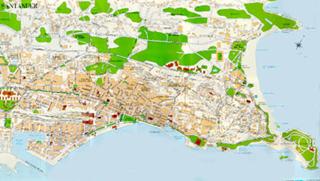 |
Santander
City Map
The original de Riberas were of the Celtic and Proto-Celtic tribes
living in the remote Spanish northern mountain areas. Later,
branches were of Jewish origin.
There
are many indicators that the name Rivera may be of Jewish origin, emanating
from the Jewish communities of Spain and Portugal. A
list of 3,500 names used by Jews, or assigned to Jews by the Holy Office (la
Santo Oficio) of Spain.
Ribera
(*) (5) (17) (29) (45)
Rivera de (13) (23)
Rivera Maldonado (6a)
Rivera (*) (5) (6a) (7) (13) (29)
Research
has found that the family name Rivera is cited with respect to Jews &
Crypto-Jews in at least 17 bibliographical, documentary, or electronic
references:
Sephardim
Ribera (*) (5) (17) (29) (45) (46)
5)
Sephardic names extracted from the book, "Finding Our Fathers", by
Dan Rottenberg. Each name is
followed by a short biography and references for additional information. This
book is a fine reference for those interested in learning Jewish genealogy
research. The publication explains
how and where to conduct research and can be purchased on this site through
Amazon.com.
(17)
From the book, "Hebrews of the Portuguese Nation", by Miriam Bodian.
(29)
"Sangre Judia" ("Jewish Blood") by Pere Bonnin. A list of
3,500 names used by Jews, or assigned to Jews by the Holy Office (la Santo
Oficio) of Spain. The list is a
result of a census of Jewish communities of Spain by the Catholic Church and
as found in inquisition records. Los
Apellidos estan sacados de las listas de penitenciados por el Santo Oficio, de
los censos de las juderias y de otras fuentes que indican claramente que la
persona portadora del apellido es judia o judeoconversa. Tiene
Vd. sangre judia? (~)
(45)
Apellidos de Judios Sefardies (Surnames of the Sephardic Jews) from the site
Comunidad Israelita Pincipado de Austurias.
(46)
"Diciionario Sefaradi De Sobrenomes" ("Dictionary of Sephardic
Surnames"): This reference provides thousand of Sephardic names of
immigrants to Brazil. The authors
have attempted to provide the ports of departure of these immigrants. The
source of this information is also available.
The
Gutiérrez family and its relationship to the Ribera family are a case in
point. Merchant Pedro Gutiérrez
(husband of Beatriz de la Sal) and his brother Ruy Díaz de Segura, whose
profession of trapero (old-clothes dealer) was traditional among the Conversos
and their ancestors were among the richest Sevillian businessmen at
mid-century. Ruy Díaz de Segura
owned three ships engaged in the carrera de Indias: the caravel Santa
María del Cabo, the Santa María de la Regla in association with
his cousin Pedro de Medina, and the Santa María de la Consolación. In
1525, he was one of the three converso merchants who tried to purchase
the farm of the almojarifazgo of Santo Domingo. His
brother Pedro Gutiérrez served as his factor in Santo Domingo during the
years 1524 to 1527. Upon his
return to Seville he devoted himself to the Afro-American slave trade, often
in association with Lucas de la Sal. Jerónima de León Y del Alcázar
Returning
again to the Alcázars, Jerónima de León, another sister of the poet
Baltasar del Alcázar, also married into a suspect family. Her
husband Pedro de Ribera was the son of Licentiate Luis Sánchez de Ribera and
María de Palma, natives of Cordova. Pedro
appears in the Sevillian Protocols along with his brother Diego as an investor
in the trade with the Indies. In
1546, he leased the property of Almuedana from the Countess of Gelves, mother
of that same Count of Gelves who employed the poet Baltasar del Alcázar as
his financial administrator.
The
union of Jerónima de León and Pedro
de Ribera is just another example of intermarriage among the New Christian
families and once again reveals the Converso origin of the
Alcázars. Three generations of
Alcázars were linked through marriage to a large group of families of similar
background whose wealth was derived from trade. These
families constituted the governing, mercantile, and intellectual elite of
Seville during this period.
As for the Celtic side of the de Riberas, today, the word Celtic
usually denotes people who are descended from one of seven (now eight) Celtic
"fringe" provinces in Western Europe. These
principal Celtic countries and regions of today are Ireland; Scotland; Wales;
Corwall; Isle of Man; Brittany, France; and Galicia, Spain.
The Celtic peoples, whose oldest remnants of their culture can be
found close to eastern France, Southern Germany and Belgium, and northern
Switzerland and Austria once spread from Galatia, Turkey to Celtiberia, Spain
and Ireland in the first Century BC.
Many Celtic descendants of immigrants to North America, South
America, Australia, and New Zealand can trace their ancestry from the Celts.
Fortunately, the Celtic culture was situated on the borders of
western civilization instead of in the center where major changes took place. As
a result, Celtic civilization offers a window into a world that existed before
many of the conventions were brought about in Western society. It
has been compared in this respect to the Hindu culture of India, the other
"fringe" culture of the Arrian expansion in Europe. There
are many similarities in their culture and their beliefs, which span back to
the formative years of Western civilization.
Celt, also spelled KELT, Latin CELTA, plural Celtae, is a member of
an early Indo - European people. These peoples spread over much of Europe from
the 2nd millennium BC to the 1st Century BC. Their
tribes and groups eventually ranged from the British Isles and northern Spain
to as far east as Transylvania, the Black Sea coasts, and Galatia in Anatolia
(Turkey).
In part, they were absorbed into the Roman Empire as Britons, Gauls,
Boii, Galatians, and Celtiberians. Linguistically
they survive in the modern Celtic speakers of Ireland, Highland Scotland, the
Isle of Man, Wales, and Brittany.
|
|
|
|
|
|
Galicia, where the de Riberas originally settled, is located in the northwestern corner of Spain. Its residents are proud of their distinctive Gallego dialect and way of life. |
|
|
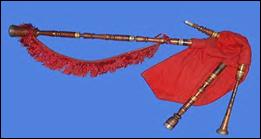 |
|
Conical
bore chanter with double - blade reed; |
|
And yes, there is a
Galician National Tartan, Tartan Gallaecia. It
is
Galicia’s most popular tartan. Tartan
Gallaecia combines white and blue threads as in the colors of the national and
historical flags of the country. The
tartan's cobalt blue threads represent Galicia's national color and the navy
blue threads represent the Atlantic Ocean. The
silver threads on the tartan represent Galicia's stormy seas, as well as the
white snow on the Galician Highlands and the nation's thousand rivers.
How
is it worn? The kilt is wrapped
around the waist and secured by the straps and buckles, with the kilt pleats at
the back. The kilt should be pulled
around from right to left and the strap passed through the hole and buckle and
then around the top apron left to right over the right hip and strapped to the
buckle. This is done to ensure that
the top edge of both sections fall together. The
kilt is worn high with the top of it over the wearer’s belly button. Kilts are
not like pants. They sit higher
around your middle.
Next
place the broad belt through the belt loops at the back and fasten tightly with
the top edge of the kilt. When worn,
the bottom of the kilt should rest just above the knee, leaving the knee on
display. Finally you can reach down
under your kilt to pull your shirt into place. (Try doing that with regular
pants!)
Galicia has several large industrialized cities and some major
ports, but its communities are mostly small, rural villages subsisting on
fishing, farming, or forestry. Emigration
has been widespread.
The maritime climate produces Spain’s wettest region and
correspondingly lush landscapes with plantations of pine and eucalyptus. Deep
fjord-like tidal inlets known locally as rías, interspersed with sandy bays and
rocky headlands characterize the coast.
Four separate provinces make up the region. The capital of Provincia de La Coruña is Santiago de Compostela, once the third most important shrine in Christendom (after Jerusalem and Rome). And it has been the goal of countless pilgrims since the cult of Saint James began during the middle ages. Modern pilgrims still flock to this fine cathedral city. The cool climate and the beautiful shoreline also attract many summer holiday visitors, and tourism increasingly bolsters the local economy.
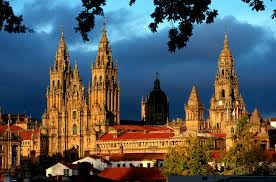
|
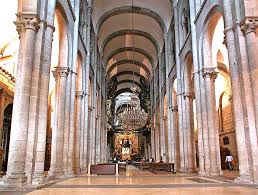
|
Cathedral of Santiago
|
 |
Traditional Galician dance |
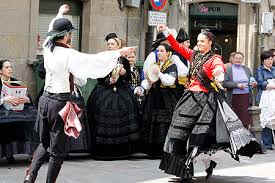 |
The land of Asturias is heavily forested, and its high rainfall and
cool temperatures are ideal for its dairy industries and apple orchards, which
produce world-famous cider. The
abundance of rivers and the rocky coastline along the Bay of Biscay make fishing
important as well. The backbone of
the economy, however, is mining and metallurgy - particularly coal and iron
mining and steel manufacturing. The
industry is concentrated in the Río Nalón Valley, forming an urban triangle
between the cities of Avilés, Gijón, and Oviedo, which is the capital of the
province.
The Pyrenees is one of the major mountain chains of Europe, forming
the border that separates France and Spain. The
range extends for almost 270 miles from the Mediterranean to the Atlantic, with
more than fifty peaks topping 10,000 feet. Wild
and beautiful, the range is characterized by the towering cliff walls of its
cirques, over which waterfalls plunge into small mountain lakes. Caves
and underground rivers are also common in the area. The
highest ice cave in Europe, the Grotte Casteret, is there.
The French side drops much more steeply than the Spanish, which
descends gradually southward into various minor ranges and counter ranges. There
is a small amount of permanent snow near the summits of the higher peaks, but
glaciers in the Pyrenees are few and small.
The weather is fairly settled in the summer, though hot on the Spanish side. The western portion of the range has more precipitation than the comparatively dry east.
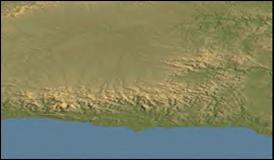 Although
the Pyrenees are lower than the Alps, they have fewer passes, and have
historically been a more significant barrier.
Although
the Pyrenees are lower than the Alps, they have fewer passes, and have
historically been a more significant barrier.
Today, however, the mountains are easily accessible from hut or
camp, and all peaks have an easy route, ideal for less experienced mountaineers.
There are also a few ice climbs and
some fine rock climbing on granite and limestone.
The family remained in the
New Mexico region of the United States and then began spreading across the
country in the 20th Century.
The descendants of
Salvador Matias de Ribera related to my family line are as follows:
1 Salvador Matias de
Ribera 1675 - 1712
.. + Juana de Sosa
Canela about 1675 -
......... 2 Juan Felipe
de Ribera 1694 - 1767
............. + Maria
Estella Palomino Rendon 1700 -
.................... 3
Salvador de Ribera 1720 -
........................
+ Tomasa Rael de Aguilar -
...............................
4 Miguel Geronimo de Ribera 1761 – After 1805
...................................
+ Maria de la Cruz Gurulé
– 1789
...........................................
5 Juan Rivera 1784 -
...............................................
+ Maria De La Candalaria Crispin 1784 -
......................................................
6 Jose Luis Rivera 1810 - 1891
..........................................................
+ Maria Isabel Martin 1817 - 1880
.................................................................
7 Jose De La Anastacio Rivera 1840 - 1905
.....................................................................
+ Maria Nicolasa Quintana 1843 - 1909
............................................................................
8 Isidro Rivera y Quintana 1870 - 1939
................................................................................
+ Maria Anna Amalia Ceballes 1878 - 1977
........................................................................................
9 Angelita Rivera 1920
........................................................................................
9 Emeregildo Rivera 1903
........................................................................................
9 Mary Rivera
........................................................................................
9 Fedelia Rivera
........................................................................................
9 Adolpho Rivera
........................................................................................
9 Geneviev Rivera
........................................................................................
9 Esteban Rivera 1916
........................................................................................
9 Louisa Rivera
........................................................................................
9 Luciano Rivera
........................................................................................
9 Altagracia Rivera
........................................................................................
9 Malisandro Rivera
............................................................................
8 Anecito
............................................................................
8 Felix
............................................................................
8 Magdaleno
............................................................................
8 Maria
............................................................................
8 Gregoria
............................................................................
8 Pabla
.................................................................
7 Crustino Rivera
.................................................................
7 Ascocion Rivera
.................................................................
7 Felipe Rivera
.................................................................
7 Lorenzo Rivera
.................................................................
7 Pablo Rivera
.................................................................
7 Luciano Rivera
...............................
4 Alfonso de Ribera 1749 -
.............................…..
+ Maria Antonia Abeyta
...............................
4 Balthazar de Ribera 1756 - 1794
...................................
+ Maria Antonia Ortiz
....................3
Vincente de Ribera
....................3
Francisca de Ribera
....................3
Juana Lorenza de Ribera 1723 -
.................... 3
Maria de Loreto de Ribera
.................... 3
Juliana de Ribera
.................... 3
Juan Miguel de Ribera
.................... 3
Antonio de Ribera 1722 - 1794
........................
+ Graciana Prudencia de Sena - 1810
...............................
4 Nicolasa Maria de Ribera 1748 -
...............................
4 Matias de Ribera 1749/50 - 1785
...................................
+ Juliana de la Pena
...............................
4 Maria Josefa de Ribera 1752 -
...............................
4 Viterbo de Ribera 1754 -
...............................
4 Manuel Antonio de Ribera 1756 -
...................................
+ Josefa Labadía
...............................
4 Antonio Jose de Ribera 1759 -
...............................
4 Santiago Francisco de Ribera 1760 -
...............................
4 Maria Rosalia de Ribera 1762 -
...............................
4 Julian Rafael de Ribera 1765 -
...............................
4 Jose de Ribera 1755 -
...................................
+ Maria Pacheco
.................... 3
Luis (Felipe or Phelipe) de Ribera 1729 -
........................
+ Palonia Antonia de la Pena
.................... 3
Jose de Ribera
.................... 3
Anna Maria de Ribera 1748 -
The book will proceed with an expansion on the various themes
touched upon in chapters one and two and include names and details of the lives
of the de Ribera families in both the Old World and New World.
Lineage is an uncertain and complex proposition.
To be sure Catholic Church records are of great importance in the attempt
to establish lineage. However, this
in itself cannot ensure that the information held therein is necessarily
correct. The use of DNA is the only
definitive way to determine one’s line without error.
As we move further into the 21st Century, technology will make
these endeavors easier. Unfortunately
for now, one must rely on the old methods.
The reader is asked to review the information in this book and use
it to determine which geographic “Branch” would provide the most logical
extension to his or her line. In
Spain, mine clearly led to Cádiz by way of Galicia.
In the New World, the entry of Salvador was much more direct and easier
to follow. Thereafter, the Ribera
line became more easily traceable.
The exploits of the Ribera men and women were extensive and heroic. It must be remembered that none was without fault.
















































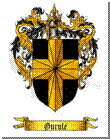

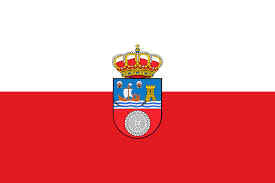


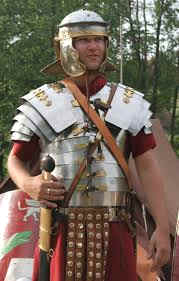 T
T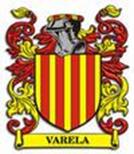
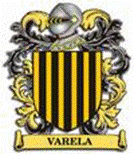

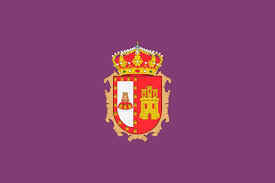

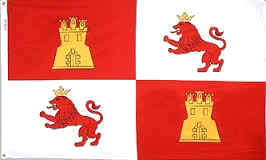
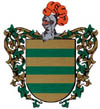
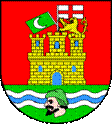
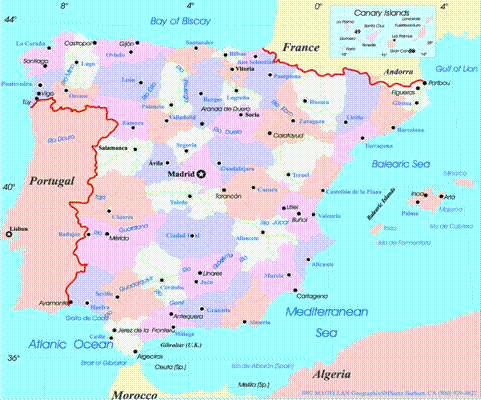
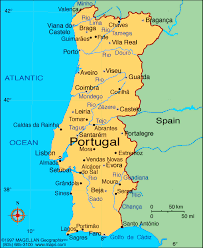 In 868 A.D., the conquest of the City of Porto (included
the area from the Minho to the Douro River), leading to the establishment of
the County of Portucale (Later Portugal), was conducted by Vímara Peres, a
Christian warlord from Gallaecia.
In 868 A.D., the conquest of the City of Porto (included
the area from the Minho to the Douro River), leading to the establishment of
the County of Portucale (Later Portugal), was conducted by Vímara Peres, a
Christian warlord from Gallaecia. 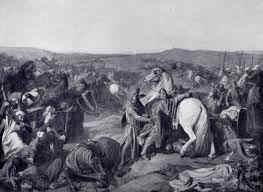 In the battle of La Sagra, in 1086,
Afonso VI of Castile was lightly wounded, but his horse was killed.
In the battle of La Sagra, in 1086,
Afonso VI of Castile was lightly wounded, but his horse was killed. 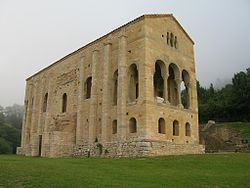
 In the Early-middle Ages, the history of Biscay cannot be
separated from that of the Basque Country as a whole.
In the Early-middle Ages, the history of Biscay cannot be
separated from that of the Basque Country as a whole. 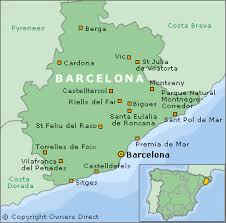 The capital and largest
city is Barcelona, the second largest city in Spain, and the centre of one of
the largest metropolitan areas in Europe, and it comprises most of the
territory of the former Principality of Catalonia, with the remainder now part
of France.
The capital and largest
city is Barcelona, the second largest city in Spain, and the centre of one of
the largest metropolitan areas in Europe, and it comprises most of the
territory of the former Principality of Catalonia, with the remainder now part
of France. 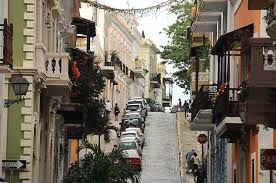
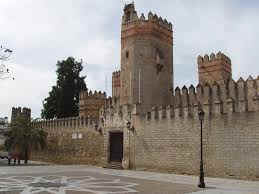
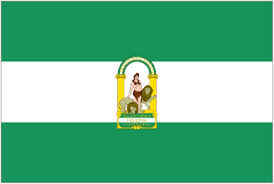
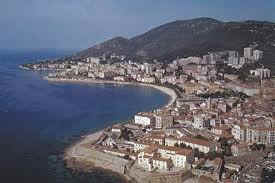 Once
Spain's poorest region, Andalucía and specifically the provinces of Malaga,
Granada, and Seville is now one of the most popular tourist destinations in
Europe.
Once
Spain's poorest region, Andalucía and specifically the provinces of Malaga,
Granada, and Seville is now one of the most popular tourist destinations in
Europe. 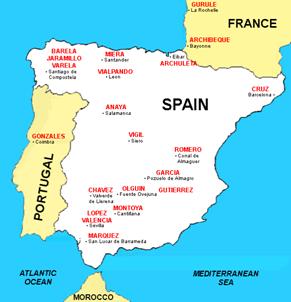
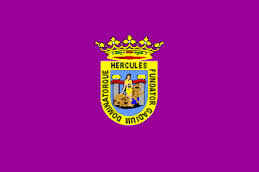 Flag
of Cádiz
Flag
of Cádiz
